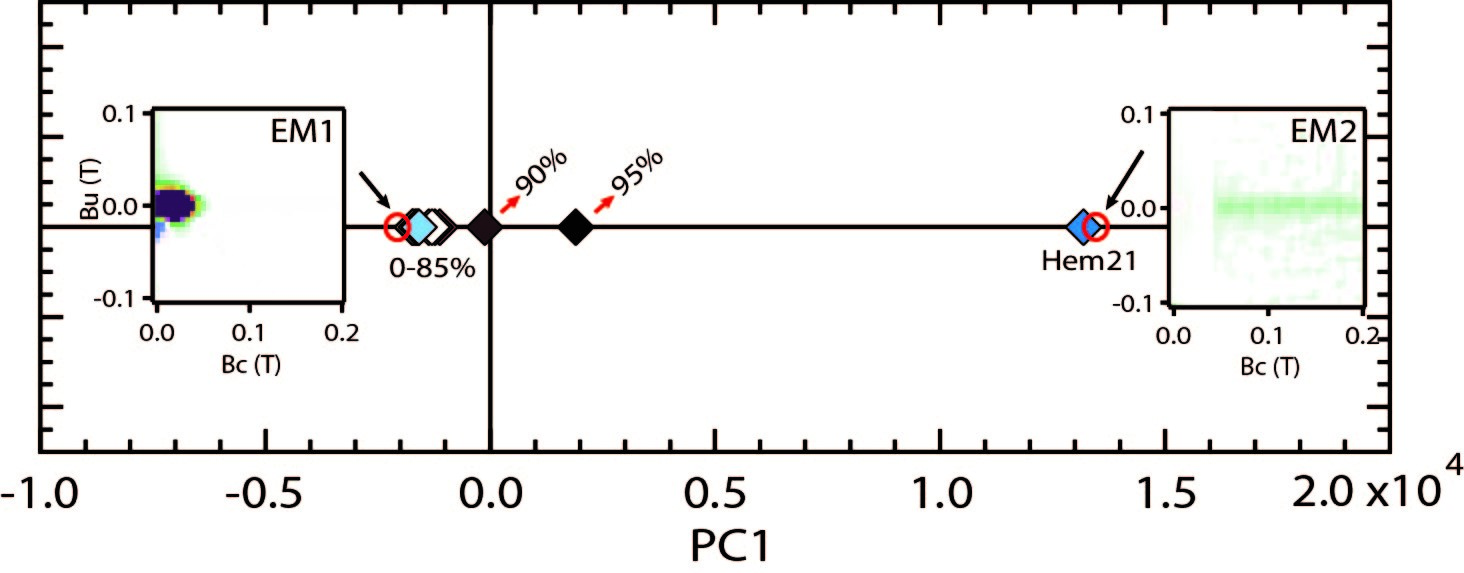Magnetic Properties of Magnetite-Hematite Mixtures
Magnetite and hematite are the two most-common iron minerals found in the Earth’s crust. Their characterization in rocks often employs methods that measure induced magnetization. Due to the large contrast in their respective saturation magnetizations, magnetite will dominate the induced magnetization. An earlier study by Frank and Nowaczyk (2008, GJI, 175, 449-461) has shown even when magnetite only makes up < 10 wt% of the ferromagnetic contribution, it will mask the presence of hematite. The ability to identify hematite in rocks, sediments or soils is important in both paleomagnetic and environmental magnetic studies. We reexamine this problem in a systematic study of synthetic mixtures of single domain magnetite and hematite with a broad spectrum of particle size, using hysteresis properties, acquisition of isothermal remanent magnetization (IRM), and first-order reversal curve distributions (FORC). IRM is not saturated when hematite concentration is 40 wt% or higher. Principle component analysis of the FORC, demonstrates the presence of an additional coercivity phase for a hematite concentration > 85 wt%. Our results illustrate the value of PCA analysis of FORC distributions, but that a complete IRM acquisition curve is the most sensitive method for identifying hematite in mixtures with a low coercivity phase.

Collaborators: P. Liu. A.M. Hirt
- P. Liu, A.M. Hirt, D. Schüler, R. Uebe, P. Zhu, T. Liu, H. Zhang, Numerical unmixing of weakly and strongly magnetic minerals: examples with synthetic mixtures of magnetite and hematite, Geophysical Journal International, under revision.
